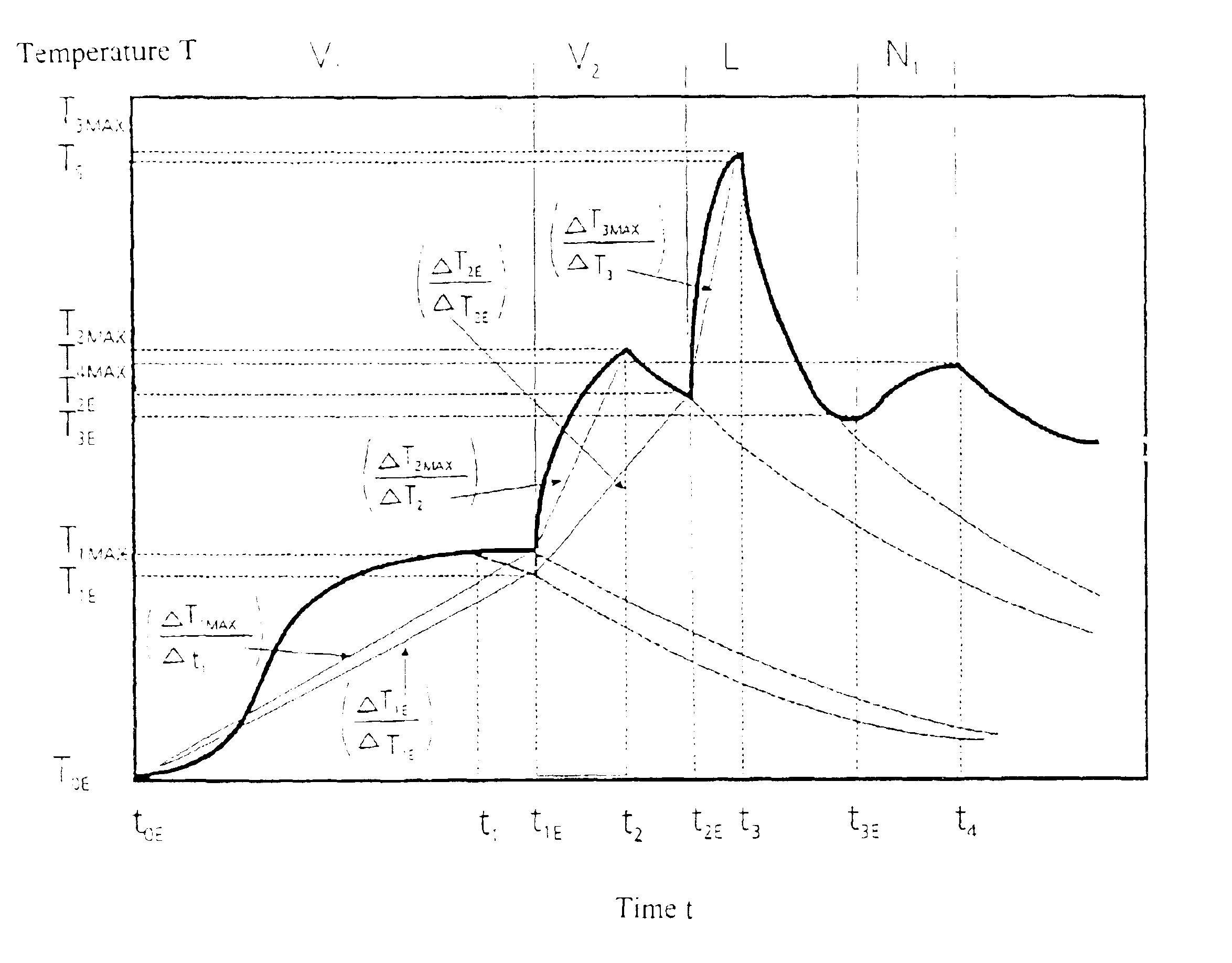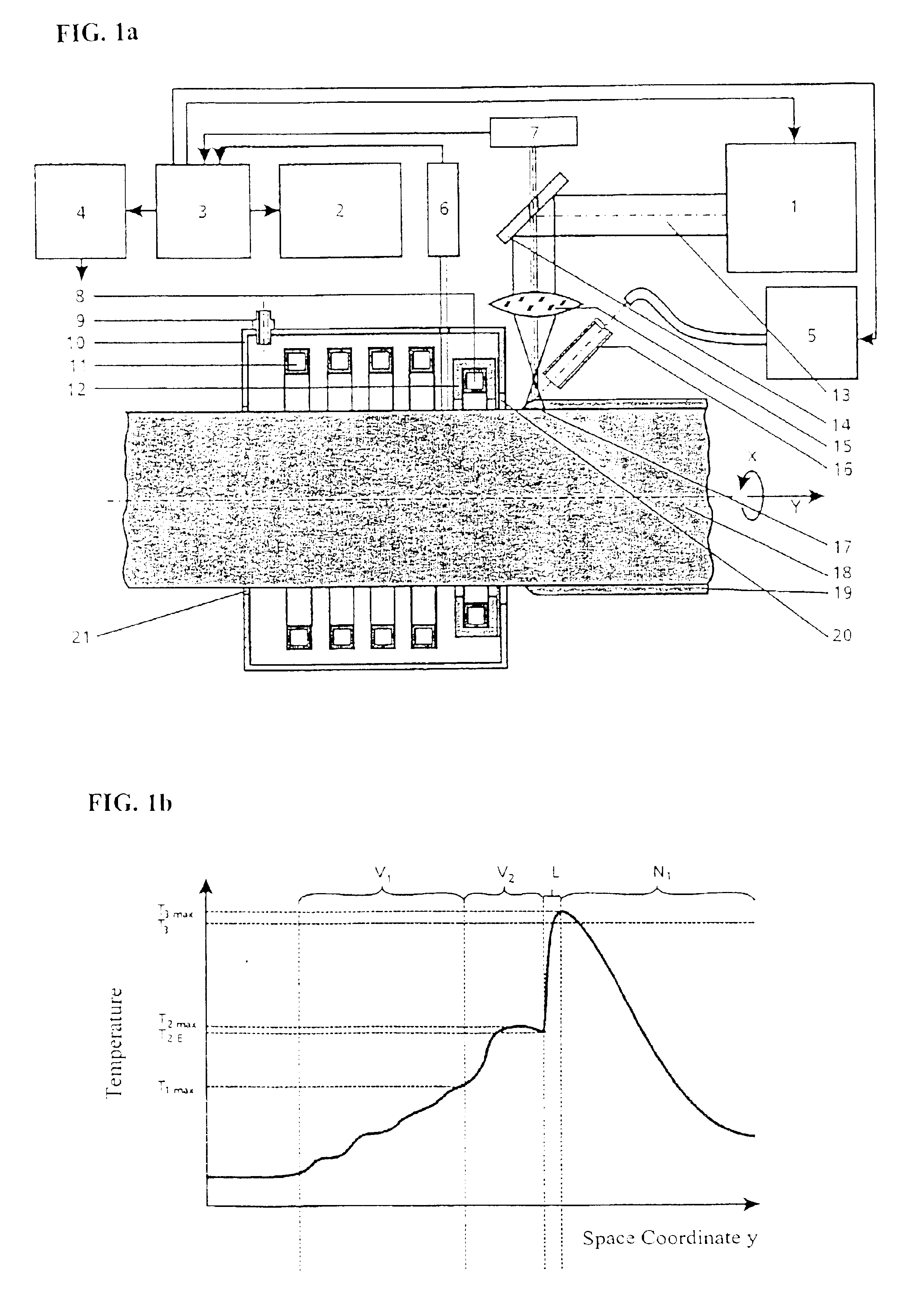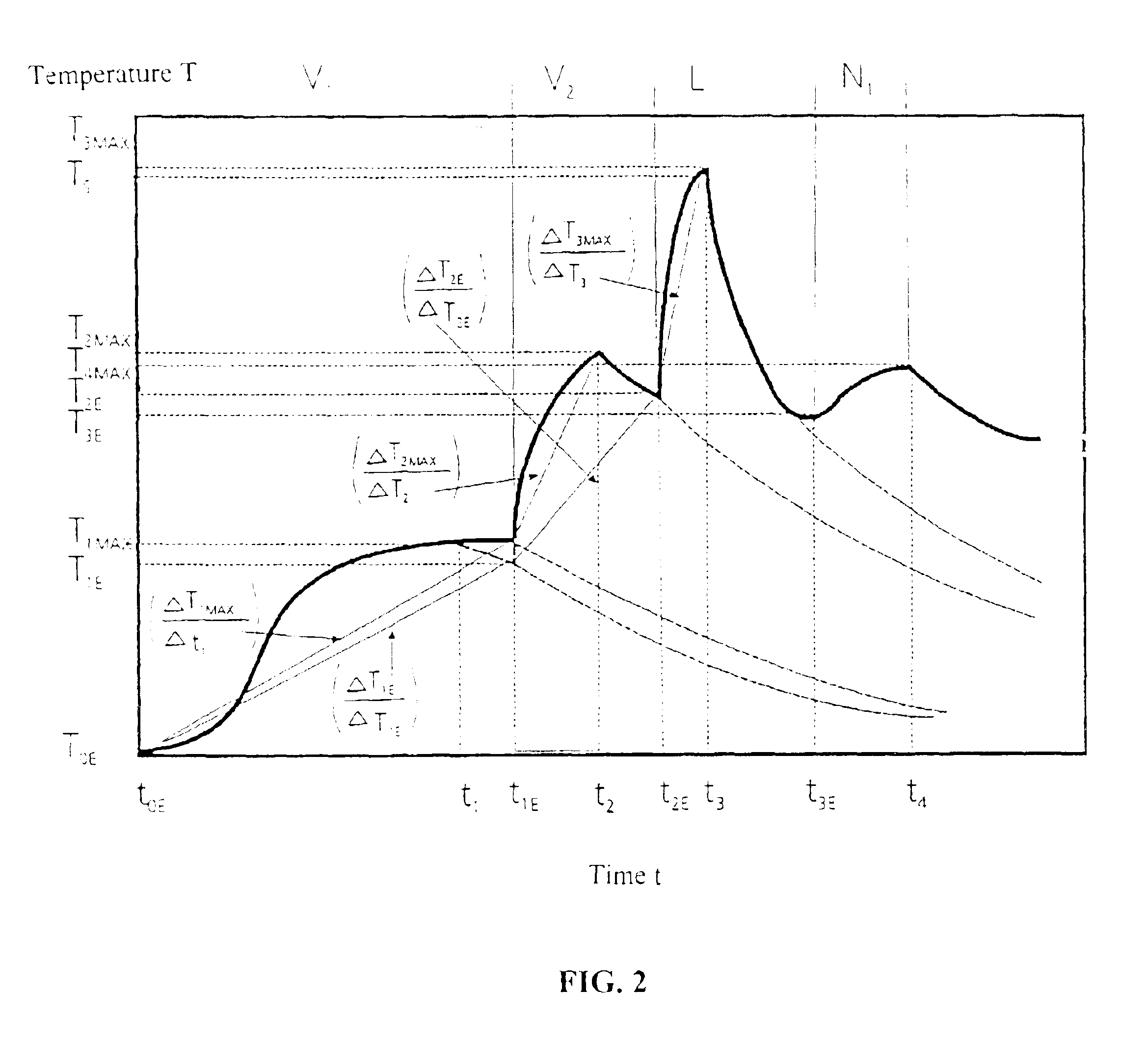Process for producing wear-resistant surface layers
a technology of surface layer and laser, which is applied in the field of process for the effective production of highly wear-resistant layers, can solve the problems of affecting the effect of the process cycle, the specific cost of providing energy is much higher with the laser than with other conventional energy sources, and the layer produced by the laser build-up welding process is too expensive, so as to achieve the effect of reducing the requirements for the following process cycle, increasing the feed rate and reducing the requirements of power and power density
- Summary
- Abstract
- Description
- Claims
- Application Information
AI Technical Summary
Benefits of technology
Problems solved by technology
Method used
Image
Examples
example 2
A steam generator pipe (cf. (18) in FIG. 4) is to be used in a corrosive environment. Since it is uneconomical to manufacture the whole pipe of an expensive corrosion-resistant material, it should be made of the cost-effective St52-3 structural steel and be protected with the material NiCr21Mo9Nb by a build-up welding process. Due to the low feed rate, the conventional build-up welding processes insert too much and undefined heat, so that it is difficult to keep the mixture at the necessary low level. However, laser build-up welding is uneconomical because the feed rate is too low.
To resolve this, a special embodiment of the arrangement according to the invention is used which is characterized by its particular simplicity (see FIG. 4). The inductive preheating is realized by an inductor I12b which contains the two inductor branches 11 and 8 which form the two inductors 11 and 12. While the inductor I1 11 is arranged in the direction {overscore (y)} of the longitudinal feed of the pi...
PUM
| Property | Measurement | Unit |
|---|---|---|
| angle of wrap | aaaaa | aaaaa |
| temperature | aaaaa | aaaaa |
| temperature | aaaaa | aaaaa |
Abstract
Description
Claims
Application Information
 Login to View More
Login to View More - R&D
- Intellectual Property
- Life Sciences
- Materials
- Tech Scout
- Unparalleled Data Quality
- Higher Quality Content
- 60% Fewer Hallucinations
Browse by: Latest US Patents, China's latest patents, Technical Efficacy Thesaurus, Application Domain, Technology Topic, Popular Technical Reports.
© 2025 PatSnap. All rights reserved.Legal|Privacy policy|Modern Slavery Act Transparency Statement|Sitemap|About US| Contact US: help@patsnap.com



